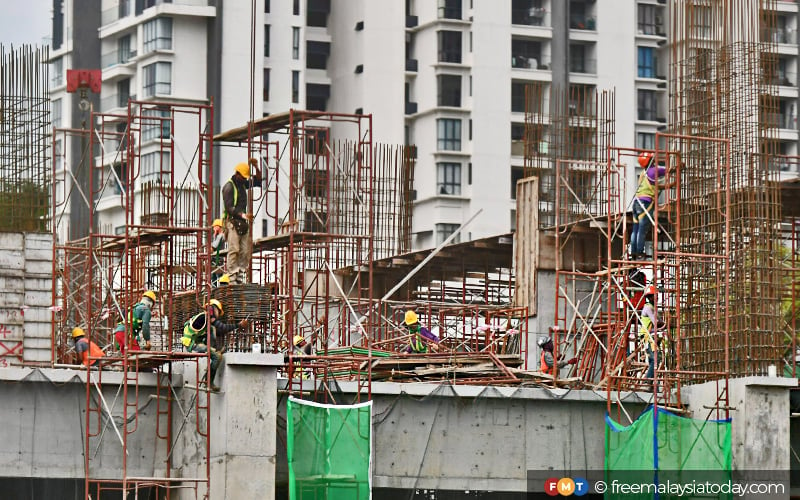
PETALING JAYA: Mandating a build-then-sell (BTS) requirement on all property development projects will protect buyers, but it will come at a cost.
Proponents of the idea argue that it will address the problem of abandoned housing projects.
“With BTS, the buyer will purchase what he can see rather than a ‘pie in the sky’,” National House Buyers Association (HBA) secretary-general Chang Kim Loong told FMT Business.
On the other hand, Real Estate and Housing Developers’ Association Malaysia (Rehda) president NK Tong warned that it could lead to a supply squeeze that could then cause prices to soar.
Recently, local government development minister Nga Kor Ming said the BTS model would be the best cure for the sick housing projects syndrome.
In June, the government announced that there were 481 “sick” projects and 112 abandoned ones across the country.
Under the BTS concept, developers may only sell the houses upon completion of the project.
This is in contrast to the current “sell-then-build” (STB) approach whereby individual houses are sold even before construction begins.
Safeguard for buyers
Under BTS, developers will have to come up with the money upfront to finance new projects.
Proponents of the concept, including Chang, agreed that this would eliminate the risk of buyers ending up with homes of quality below that promised at the point of purchase.
“Buyers will get to physically inspect the property before making a purchase, helping them make a good decision,” PropertyGuru Malaysia country manager Sheldon Fernandez told FMT Business.
He said buyers would not be caught in a bind if the project was delayed or abandoned halfway due to unforeseen circumstances.
Financial concerns
Critics argue that BTS would make it difficult for small-scale developers to undertake new projects, leading to a short supply and therefore higher prices.
“Developers require substantial financial resources to start construction, which may be a hurdle for smaller or newer developers,” Fernandez said.
Tong agreed BTS could lead to a supply squeeze given that the majority of property developers are small-scale businesses.
“This will impose additional financial constraints in an industry where development cost is already so steep,” he said.
He said it may also be challenging for financial institutions given that they are not prepared to nor do they normally fund projects on a BTS basis.
However, Khazanah Research Institute research director Suraya Ismail said empirical data has shown that there is little difference in prices for homes modelled on a variation of the BTS, called the BTS 10:90, and the STB.
The BTS 10:90 system requires an outlay of 10% as downpayment, with the remaining 90% being paid only upon delivery of vacant possession as opposed to progressive payments during the construction phase.
She told FMT Business that taking delivery of a completed property was appropriate compensation for any possible price increase.
In contrast, under the STB, buyers would have to wait for several years to get their house with risks associated with project abandonment or delay, and quality issues.
“Under STB buyers also pay extra during the construction stages in the form of monthly interest payments, unnecessary rental, home inspection upon completion, and time and cost for claims at tribunal,” she said.
Eliminate unfit developers
On the operational sustainability of small-scale developers, Suraya said the viability of projects depends on the scale of the development, not of the company.
“This means that even for smaller developers, a project will still be viable under the BTS system if the scale of the development reflects the company’s capital and technical capacities,” she said.
Under BTS, only financially and operationally sound property developers will be able to undertake new developments, ensuring minimal occurrence of sick and abandoned projects.
Greater scrutiny will also be placed on the relevant experience and financial strength of the developer, she said.
“Under this arrangement, the risk associated with housing construction will be borne by developers and the banks.
“They (the developers) will also have the discipline to limit the number of units based on their feasibility studies with the financial institutions, consequently leading to a more responsive supply sector and preventing the creation of property gluts,” she said.
According to Suraya, there have been no reports so far that a licensed BTS 10:90 project was delayed, sick or abandoned.
She claimed that a BTS requirement would improve and enhance the quality of homes as well as the property market.
“To secure profits and encourage buyers to purchase completed homes that they can inspect, developers need to exert more effort to provide good-quality houses to their potential customers.
“The onus would be on the developers to compete in terms of price and innovation, as compared to a system where consumers pay exorbitant prices and may not get what they pay for,” she added.















POST YOUR COMMENTS